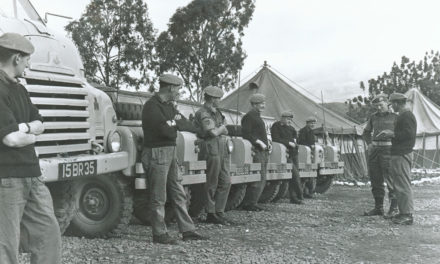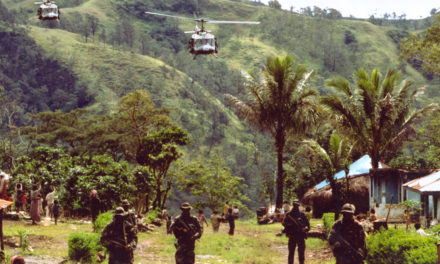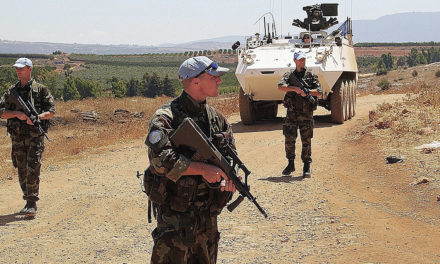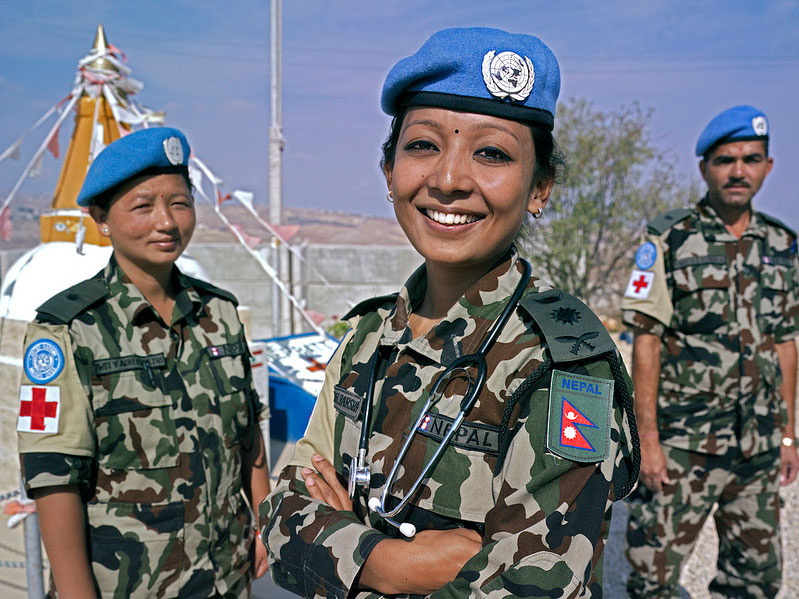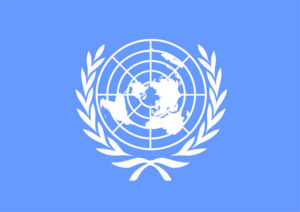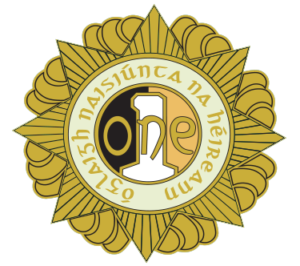Deployments in Europe
Stabilisation Force – European Union Force
SFOR – May 1997 — Dec 2004
EU – BiH – Dec 2004 – to Date
Under UNSCR 1031 NATO was given the mandate to implement the military aspects of the Dayton Peace Agreements following the end of the war in Bosnia Herzegovina in 1995. As a result IFOR (Implementation Force) was deployed and completed its mission by December 1996 and was subsequently replaced by SFOR.
The new force’s mandate, authorised by UNSCR 1088, consisted of deterring the resumption of hostilities, promoting a climate conducive to the peace process, and providing support to civilian organisations. Commencing with 32,000 troops SFOR underwent reorganisation in 1999/2000 and was reduced to 20,000.
Irish contribution began in May 1997 and consisted of a Military Police (MP) Company Headquarters, a Military Police Platoon, and a National Support Element. The contingent was based in SFOR HQ in Sarajevo and policed the 8,000 SFOR troops based in the area. The Irish MP Coy was withdrawn in January 2003.
The Defence Forces retained 12 positions in SFOR HQ until December 2004 when SFOR was replaced by the EU-led mission, Operation ‘Althea’, also known as EUFOR, which was authorised by UNSCR 1575.
EUFORs mission is:
- To provide capacity building and training to the Armed Forces of BiH
- To support BiH efforts to maintain a safe and secure environment
- To provide support to the overall EU comprehensive strategy for BiH
EUFOR also provides support to the International Criminal Tribunal for the Former Yugoslavia (ICTY) and provides the security environment in which the police can act against organised criminal networks. Defence Forces contribution to the new mission has increased and we now have 7 personnel serving with EUFOR.
There are 7,000 troops serving with EUFOR, provided by 17 EU member states and 5 non-EU states.
| Operation Details | |
| Ribbon for the Medal |  |
| Duration | May 1997 — to date |
| Operation type | EU led Crisis Management Operation |
| Commitment | 5 |
Kosovo Force
KFOR – August 1999 to date
During the fragmentation of the former Yugoslavia most of the attention internationally was focused on the conflict between Croatia and Serbia, and between Serbs, Croats and Muslims in Bosnia Herzegovina.
However, throughout this period another conflict was taking place in the then little known Serbian province of Kosovo. Kosovo shares a border with Albania and has a large majority population of ethnic Albanians. After the Balkans War in 1913 Kosovo became a part of Serbia and after the First World War became a part of Yugoslavia, despite its large Albanian majority. However, the importance of Kosovo to the Serbs should not be underestimated. This importance stems from the final defeat of the Serbs by the Ottoman Empire at Kosovo Polje in 1389. Since that time the region has had huge significance in the psyche of Serb nationalists. In the Balkans, where grudges can last for generations, time has its own measure and many Serbs talk about the battle at Kosovo Polje as if it took place a few years ago.
In 1974 Kosovo became an autonomous province within Tito’s Yugoslavia and this lasted until after his death. In 1990 Kosovo’s autonomy was revoked and its provincial assembly dissolved by the Serb government. As resistance to Serb rule increased, the Kosovo Liberation Army (KLA) emerged and began attacking Serbian security forces, who responded heavy-handedly against the population as a whole.
By 1997, with the situation in the remainder of the Balkans stabilising, the international community began to focus on Kosovo. In 1998 a Contact Group, comprising France, Germany, Italy, the UK, Russia and the US began diplomatic efforts to resolve the conflict. Meanwhile NATO planners drew up military plans to support the diplomatic process. In September UNSC Resolution 1199 highlighted an impending human catastrophe in Kosovo and demanded a ceasefire. By March 1999 the violence was continuing and after a UNHCR report stated that 250,000 people were displaced in Kosovo due to the conflict NATO began an aerial bombardment of Serbian targets in Kosovo and Serbia. In June 1999 Serbia agreed to the G8 Peace Principles and began to withdraw its forces. NATO ended its air strikes and KFOR, which was authorised by UNSC Resolution 1244, entered Kosovo.
KFOR’s mission is to establish and maintain a secure environment; monitor, verify and enforce compliance with the various agreements; and to provide support to the UNMIK mission. The NATO-led KFOR mission began with 50,000 troops from 36 NATO and non-NATO nations, including Ireland.
On 29 February 2008 Ireland recognised the Republic of Kosovo following the 17 February Kosovo Assembly Resolution which declared Kosovo independent.
In 1999, the Defence Forces initial contribution to KFOR consisted of a transport/logistics company, with a fleet of articulated vehicles, DROPS vehicles, 4x4s and ancillary vehicles. The Irish unit, based in Camp Clarke, Lipljan, 15km south of Pristina, was situated in Multinational Brigade (MNB) Centre. The unit was under control of HQ KFOR and their mission was to provide, on order, equipment and material lift to military units in KFOR and to humanitarian organisations working with the UN.
In October 2004 Defence Forces’ involvement with KFOR changed when 8 Irish Transport Company was replaced by an Armoured Personnel Carrier-mounted infantry company, designated 27 Infantry Group. The company operates now as part of Multinational Task Force (Centre).
A Contingent HQ element and logistics support group remain in Camp Clarke, a number of officers and NCOs took up appointments in Camp Ville, and the infantry company was split between Camp Clarke and Camp Karhu (a former Finnish position in the Serb village of Donja Gusterica). The remaining Irish personnel serving in-theatre are split between KFOR HQ, Task Force (Centre) HQ, and the multinational MP Company. The National Support Element of one officer and three NCOs was established in Skopje, in the Former Yugoslav Republic of Macedonia (FYROM).
The Irish company’s area of responsibility (AOR) covers 190 sq km and it carries out its mission through vigorous and regular patrols in their Mowag APCs. The eastern part of the AOR is mountainous and dotted with Albanian villages while the western part consists of smaller hills and contains a Serb enclave. There are two villages in the AOR with mixed populations, Janjevo and Robovce.
In 2010 Camp Clarke closed and all the remaining appointments in Camp VIlel were discontinued ona phased basis. The Defence Forces still hold 12 appointments in KFOR Hq – Flim City.
| Operation Details | |
| Ribbon for the Medal |  |
| Duration | August 1999 to date |
| Operation type | NATO – PfP led Peace Support Operation |
| Commitment | 20 |


